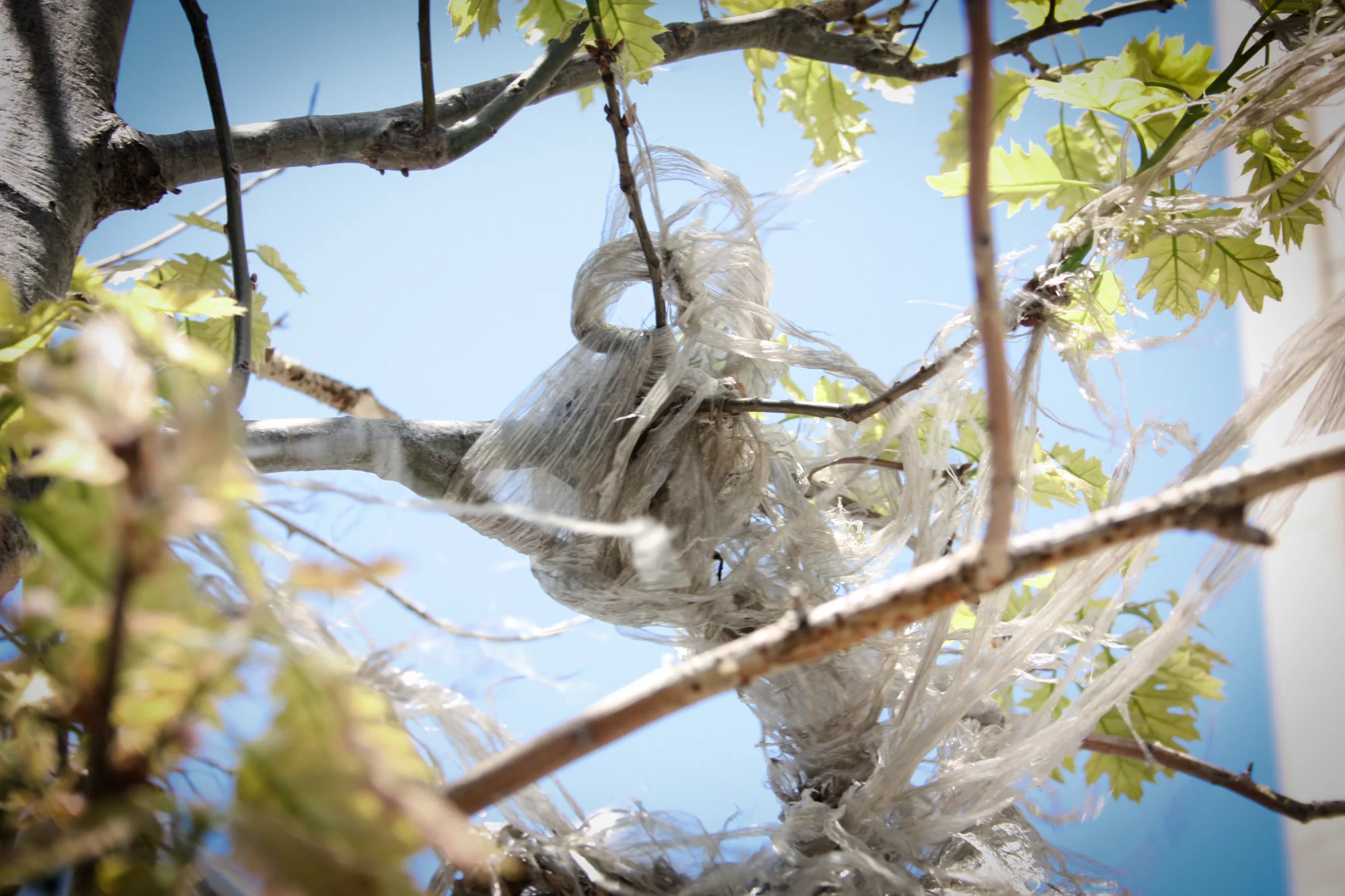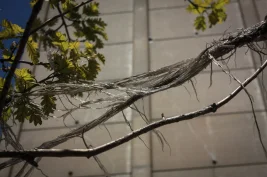Plastic Bags in Trees, ongoing
Plastic bags are a ubiquitous part of my New York landscape. They are an everyday part of living in the belly of the beast, with our over-reliance on convenience and worship of commerce. It’s estimated that it takes 20 to 1000 years for a plastic bag to break down. I see them floating along streets, forlorn and abandoned. Snarled and caught in gingko and oak branches, I see the same bags nesting in the same spots for years. They change over time bearing the brunt of the weather’s forces that become more unpredictable and extreme every year. They will be here long after me.
But I also see them as beautiful, like seeing beauty in a bright cluster of fake flowers at the 99 cent store. The photographers of the New Topographics, the Becher’s and Nicholas Nixon, who rejected the idealized landscape photography of Ansel Adams and others. Instead, they turned to the everyday urban landscape, to see the beauty in industrial pattern, shape, movement, and shadow. The New Topographers help me to consider the question, how do we reconcile our capitalist sins with a genuine discovery of aesthetic delight? Can we see beauty in a toxic object? Look at a weathered plastic bag twisted until it seems part of the tree growth itself, flapping in the wind like it has wings, sun shining through it’s hazy material, glowing. The bags are beautiful survivors.





